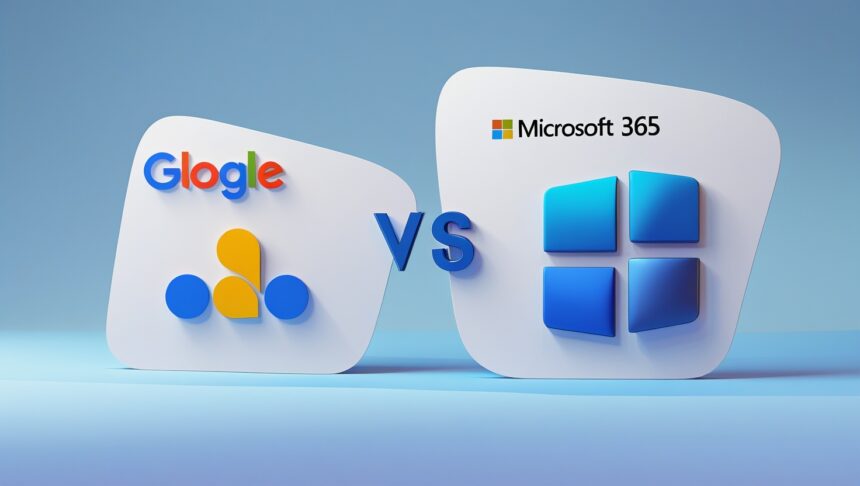In today’s fast-paced digital workplace, productivity tools are no longer just conveniences; they are the backbone of how businesses, teams, and individuals get work done. This is why it’s important to know how to use Google workspace and Microsoft 365.
From managing emails and storing files to collaborating on documents and hosting virtual meetings, the right productivity suite can make the difference between smooth workflows and daily bottlenecks. Two of the most dominant players in this space are Google Workspace and Microsoft 365.
This guide will walk you step by step through the essentials of using Google Workspace and Microsoft 365 for productivity. By the end, you’ll understand not only how to use each suite but also which platform may be best suited for your workflow and business goals.
Getting Started with Google Workspace
Google Workspace is designed for cloud-first collaboration.
Key apps include:
- Gmail for email and communication
- Google Drive for file storage and sharing
- Docs, Sheets, and Slides for document creation and collaboration
- Google Meet for video meetings
- Google Calendar for scheduling and time management
Steps to set up and use effectively:
- Sign up for Google Workspace with your business or personal domain
- Use the admin console to manage users, security, and permissions
- Create shared folders in Google Drive to centralize team documents
- Use real-time collaboration in Docs, Sheets, and Slides to reduce back-and-forth emails
- Schedule meetings with Google Calendar and launch video calls directly from events
Tips to boost productivity:
- Use Google Forms for surveys or quick data collection
- Set up labels and filters in Gmail to keep inboxes organized
- Connect Google Workspace with tools like Slack, Trello, or Zoom for smoother workflows
Getting Started with Microsoft 365
Microsoft 365 combines powerful desktop and cloud apps for business and individual productivity.
Key apps include:
- Outlook for email and calendar
- Word, Excel, and PowerPoint for documents, data, and presentations
- Teams for chat, video conferencing, and team collaboration
- OneDrive for cloud storage and sharing
- Power BI for data visualization and analytics
Steps to set up and use effectively:
- Sign up for Microsoft 365 and download desktop apps if needed
- Store and share files with OneDrive for automatic syncing across devices
- Use Teams to create channels for different projects or departments
- Schedule meetings in Outlook and integrate with Teams for seamless video calls
- Use Excel for financial models, reporting, or project tracking
Tips to boost productivity:
- Use OneNote for personal and shared notebooks
- Automate repetitive tasks with Power Automate
- Add third-party integrations in Teams for project management
- Protect sensitive files with OneDrive’s advanced sharing and Personal Vault
Collaboration and Communication
Both platforms shine in collaboration, but in different ways.
- Google Workspace offers lightweight, intuitive, real-time editing across Docs, Sheets, and Slides, which makes it perfect for startups, small teams, or remote-first work.
- Microsoft 365 provides enterprise-grade security, advanced features, and offline capabilities. It is best suited for larger organizations or businesses handling complex data.
Choosing the Right Platform
When deciding between the two, consider:
- Team size and budget
- Need for advanced features versus simplicity
- Industry compliance requirements
- Preferred communication style, whether Meet or Teams
FAQs about How to Use Google Workspace and Microsoft 365 for Productivity
What is the difference between Google Workspace and Microsoft 365?
Google Workspace is cloud-first, while Microsoft 365 combines desktop and cloud apps. This is why it’s important to know how to use both.
Which is better for small businesses?
Google Workspace is simpler and cheaper, Microsoft 365 has more advanced features.
Do they work offline?
Microsoft 365 works offline fully, Google Workspace needs offline mode enabled.
How secure are they?
Both are highly secure with encryption and two-factor authentication.
Which is more cost-effective?
Google Workspace is often cheaper; Microsoft 365 offers more features at higher cost.






